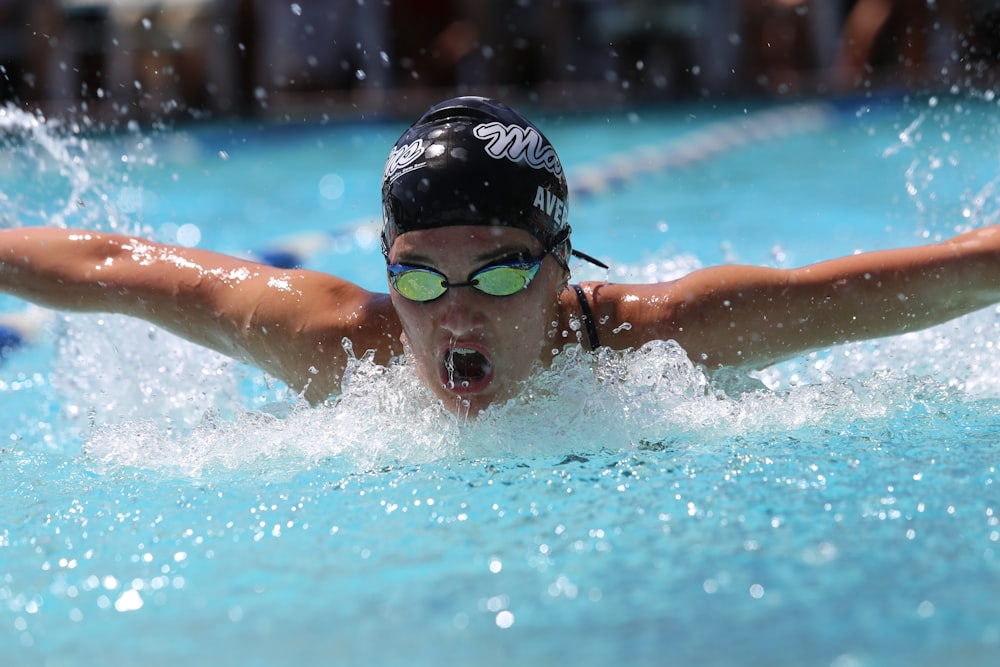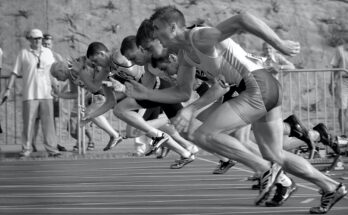Improve Your Stroke in Swimming with these Tips
In the past, participants in a freestyle race could swim however they pleased. However, the term freestyle has taken the place of front crawl as the moniker for the stroke as what was once known as the front crawl became the preferred method of freestyle. Want to how to improve your swimming?
While the head is submerged and the swimmer breaths sideways, freestyle entails alternating arms moving forward in windmill patterns. In order to stabilize the body, it is complemented with a two- or six-beat flutter kick that is timed with arm movements. Learn how to use your arms, kick your legs, and breathe properly if you want to learn how to freestyle for entertainment, fitness, or contests.
Hand placement and entry: improve your swimming
Image via Unsplah.com
Your hands should be at ease and your fingers should be clasped together as you start your stroke. Fingers first, dip your hand into the water 15 inches above your head. In order for your index and middle fingers to dip into the water first, your palm should be turned outward at a 45-degree angle. Your elbow will be lifted above your wrist, and your wrist should be angled down and above the fingers. When entering, try to minimize splashing with your hand. Extend your arm another 4 inches after putting your hand in the water.
Once your hand is submerged, extend your fingers slightly and press your hand outward. “Getting a feel” for the water is what this involves.
Work on your downs weep: improve your swimming
During this part of the stroke, your arm will function as a lever. Your body will rotate towards the arm that is being stroked as you do so. With your elbow held at roughly a 45-degree angle, move your forearm and hand backward and downward. Throughout this part of your stroke, your elbow should remain elevated in the water. Pay attention to effectively navigating the downs weep.
This stage ought to proceed quickly. Although it won’t help you go forward much at this period, trying to move quicker could produce drag.
Pull your hand and body towards center of body
Image via Unsplah.com
Use your hand as a paddle during this portion of the stroke to move as much water as you can. Here, you begin to advance your body while making arm stroke motions. In the “propulsive” phase, it is the initial section. Additionally, your upper arm will incline inward towards your ribcage and chest. You’ll start to move your elbow into a 90-degree angle. You’ve reached the backs-weep when your hand begins to converge on your body’s midline.
Instead of stroking at your sides, keep your arms closer to your body.
Up, out and backward motion: improve your swimming
The second “propulsive” phase is where your stroke can pick up speed. You’ll cease drawing water as soon as your hand reaches your body’s midline and begin pushing it instead. Up till your arm touches the line of your thigh, keep pushing water out and up. You can go forward with the maximum force during this portion of the stroke because it will happen at the fastest rate.
Move your elbow out of water
Image via Unsplah.com
Your arm does not drive you forward during the release, but it does support the arm that is tugging underwater. It’s crucial to practice your release technique for a clean hand entry. Launch your hand out of the water in front of you, parallel to your shoulder, to finish your stroke. Your hand should swing broader than your arm and your fingers should dangle gently above the water. You should swing your arm wide and with ease.
Don’t force a down spin at the conclusion of the release; instead, focus on rotating your arm forward.
Flutter kick below surface: improve your swimming
Even while kicking only contributes 10 to 15% of your total stroke power, it is still a crucial component of your freestyle technique. Make a series of rapid kicks while keeping your hips close to the water’s surface. Your kicking range of motion should be restricted since you want to concentrate on reducing drag as you move ahead. Your legs shouldn’t kick out of the water or break below your body’s line of symmetry.
Kick using your thighs and hips. Avoid kicking with your knees bent; this is known as a bicycle kick and will increase drag. While kicking, you may slightly sag your knees, but this should not be where your force is coming from.
Two beat kick: improve your swimming
Image via Unsplah.com
Long distance and medium distance swimmers both employ the two-beat kick, which requires less force. Per cycle of the stroke, you kick one leg. One arm’s worth of strokes constitutes one cycle. In addition to the inswing of the opposing arm, kick one leg. You may visualize how your kicking should be synchronized with your arm stroke if you can think about how your arms and legs move together as you walk, with your arm moving forward at the same time as the opposing leg.
Three kicks each arm stroke cycle is necessary for the six-beat kick. In the recovery phase, the third beat of the kicking cycle will begin. This is a quicker kick that quicker swimmers use.
Point towards toes while kicking
Your exposed forefoot will provide extra drag if your toes are not pointed while you kick. As you kick, your big toes should be close to touching and facing inward. Your ankles’ flexibility is being worked when you point your toes. If your ankles aren’t flexible, you might want to practice your kick with a pair of mid-length flippers.
With the added propulsion that flippers offer, you can concentrate on your freestyle arm and leg skills more effortlessly. However, during drills, simply use your flippers to assist in training your feet.
Hold your head under water: improve your swimming
Image via Unsplah.com
The water should be situated between your eyebrows and hairline. While swimming, keep your upper back and neck muscles relaxed. A 45-degree forward cock should be present on your head. More resistance will be felt if you lower your head too much towards your chest.
USEFUL LINKS:
Check out more techniques to be good at swimming
Learning how to swim: Things you should take care of










One Comment on “Improve Your Stroke in Swimming with these Tips ”